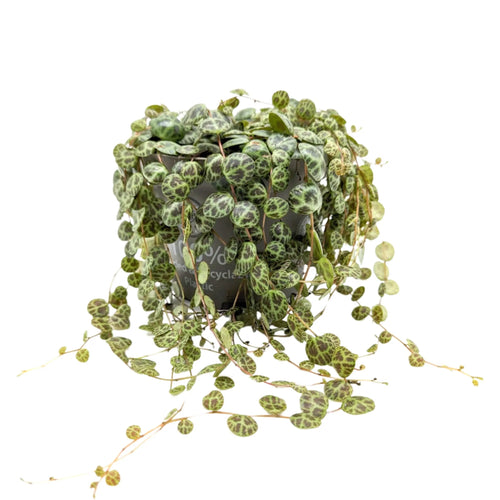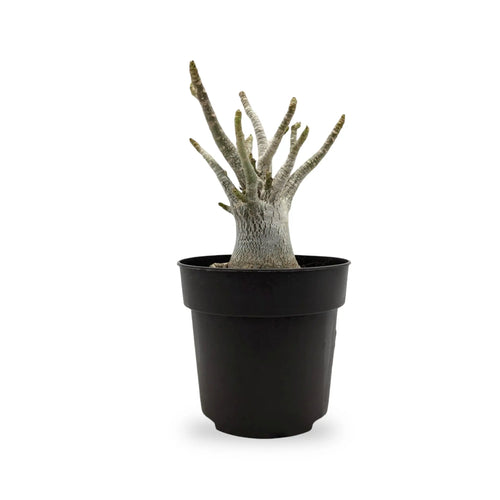In an increasingly fast-paced and stressful world, many people are turning to nature to find peace and balance. Houseplants, once considered simple decorative items, have now become essential companions in cultivating mindfulness and improving overall well-being. Caring for plants isn’t just about keeping them alive—it’s an act of mindfulness that allows us to slow down, connect with nature, and nurture both our environment and our inner peace.

The Healing Power of Greenery
Research has shown that spending time around plants can reduce stress, improve focus, and promote relaxation. The act of watering, pruning, and observing plant growth brings you into the present moment, fostering mindfulness. This practice, often referred to as horticultural therapy, helps reduce anxiety and promotes a sense of calm. Tending to plants allows your mind to rest from the constant stream of thoughts and worries, grounding you in the now.
Caring for a plant is a simple yet powerful reminder that life thrives with attention and patience. Each small act—whether it’s checking the soil’s moisture or trimming old leaves—builds mindfulness habits that extend beyond gardening into daily life. As you focus on your plant, you naturally quiet mental distractions and connect with something living and growing.
Mental and Emotional Benefits of Plant Care
The emotional connection we form with houseplants can be surprisingly strong. Watching a plant flourish under your care provides a sense of accomplishment and joy. It’s a reminder that nurturing something, even something small, can bring growth and reward. Studies suggest that interacting with indoor plants can reduce symptoms of depression, lower blood pressure, and even improve productivity.
Moreover, plants can influence mood and energy levels. Their presence adds life and color to a space, making homes feel more welcoming and vibrant. Many people describe tending to plants as a meditative ritual—a mindful pause in a busy day that helps them recentre and breathe.
How Plants Support Physical Well-being
Beyond the psychological benefits, plants can also improve physical health. Through photosynthesis, they absorb carbon dioxide and release oxygen, refreshing the air we breathe. Certain species, such as peace lilies, snake plants, and spider plants, can filter out harmful toxins, contributing to a cleaner indoor environment. Increased oxygen levels may also enhance focus and mental clarity, while the added humidity from plants can soothe dry skin and improve respiratory comfort.
In addition, plants indirectly encourage movement and healthy routines. Caring for them—watering, pruning, and repositioning for light—keeps us active and engaged. These small actions may seem simple, but they contribute to overall physical activity and provide meaningful breaks from sedentary tasks like working at a desk.

Mindfulness Through Plant Care
Plant care is inherently mindful. It requires observation, patience, and awareness—key elements of mindfulness. When you water your plant, you pay attention to its needs: Is the soil dry? Are the leaves drooping? Has it outgrown its pot? Each observation brings your attention to the present moment, fostering focus and intention.
This process mirrors meditation. Just as focusing on the breath anchors awareness, focusing on a plant’s growth encourages stillness and connection. Over time, these mindful moments accumulate, leading to reduced stress and a greater appreciation for small joys.
Building a Routine of Green Mindfulness
To incorporate mindfulness into your plant care routine, start small. Choose a few easy-to-maintain plants such as pothos, peace lilies, or succulents. Each day, take a few minutes to check on them—feel the soil, notice new leaves, or simply observe their growth. Resist the urge to rush. These moments of stillness can become your personal meditation practice.
You can also create a calming ritual around plant care. Play gentle music, light a candle, or open a window to let in fresh air as you tend to your plants. Allow this time to become a form of self-care—something you look forward to each day.
Creating a Mindful Green Space
Designing your indoor space with plants can also enhance mindfulness. Choose a dedicated corner or shelf for your green companions—a space where you can pause and reflect. Mixing various textures, shades, and sizes of plants creates a soothing visual experience that stimulates calm and creativity.
Some people like to pair plant care with journaling or affirmations, noting how their plants are growing alongside their own personal growth. Others find joy in rearranging their plants to capture new light patterns, reminding themselves that change and adaptability are part of life’s natural rhythm.
Sharing the Joy of Green Living
Mindfulness through plants doesn’t have to be a solitary experience. Joining plant swap events or sharing cuttings with friends and neighbors builds connection and community. Conversations about plant care often lead to discussions about mindfulness, balance, and well-being.
Plant swaps, for example, encourage sharing knowledge, stories, and experiences, creating meaningful social connections rooted in a shared love for nature. These gatherings are not just about exchanging greenery—they’re about fostering compassion, understanding, and togetherness.

Starting Your Own Green Journey
If you’re new to houseplants, begin with low-maintenance varieties that suit your environment. Snake plants, spider plants, and pothos are excellent starters. Observe how they respond to light and water, and adjust your care routine accordingly. Each plant teaches patience and attentiveness.
As your confidence grows, experiment with new types of plants or even propagate your existing ones. The joy of seeing new roots form or fresh leaves sprout is deeply satisfying and reinforces the mindfulness that comes with nurturing life.
Embrace the Green Connection
Ultimately, caring for plants reminds us of our connection to nature and the cycle of growth. Each moment spent with your plants is an opportunity to slow down, breathe deeply, and appreciate life’s quiet details. Through the simple act of nurturing a plant, we learn to nurture ourselves—cultivating mindfulness, resilience, and inner peace.
Whether you have a single succulent on your desk or a thriving indoor jungle, every green companion contributes to a calmer, more mindful home. So, take a moment today to check on your plants, touch their leaves, and notice how they grow. In caring for them, you’ll discover that you’re also caring for your own well-being.








